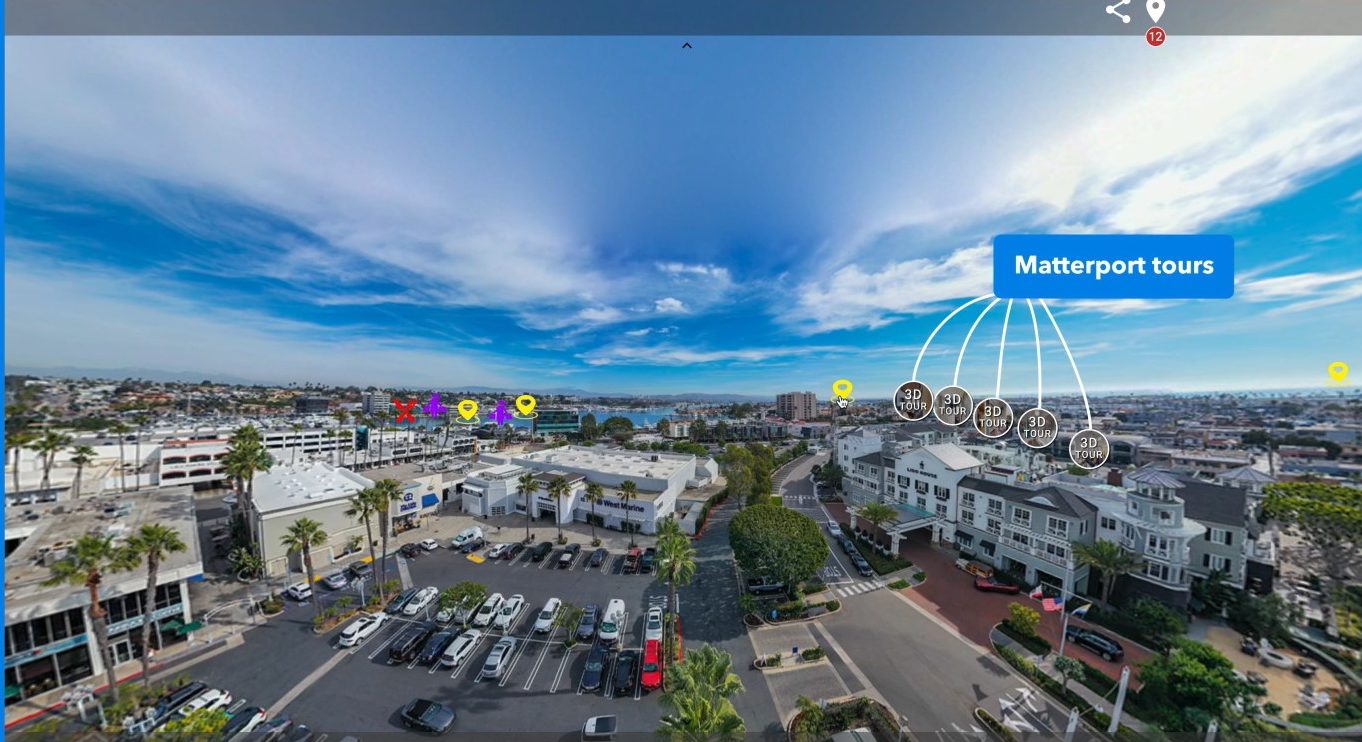how do 360 cameras work
How Do 360 Cameras Work?
360-degree photography has changed the way we see and share the world. Whether you’re a creative professional or a real estate agent, understanding how 360 cameras work can open new doors. These cameras capture an entire scene in every direction. This allows viewers to explore spaces as if they were actually there.
In this guide, we’ll break down how 360 cameras operate, what makes them unique, and how you can use them to elevate your business. If you’re looking to create immersive virtual tours, platforms like www.threesixty.tours make it easy to showcase your 360 content professionally.
I. Introduction
In today’s digital-first world, 360-degree cameras are making waves. Unlike regular cameras that only capture what’s in front of them, 360 cameras take in everything—front, back, sides, even above and below. This makes them ideal for creating immersive experiences.
A. What Is a 360 Camera?
A 360 camera, sometimes called an omnidirectional camera, uses two or more wide-angle lenses to capture the entire environment around it. The result? A spherical image or video that viewers can explore interactively.
B. Why Are 360 Cameras Getting So Popular?
The rise of virtual reality (VR), augmented reality (AR), and immersive web experiences has fueled the popularity of 360 cameras. Real estate professionals, educators, travel bloggers, and marketers are using them to create engaging content. This goes beyond flat images and video.
C. What You’ll Learn in This Guide
We’ll break down the tech behind 360 cameras in simple terms. From how they capture images to how they’re used in real-world scenarios, you’ll gain a full understanding. We’ll also show you how platforms like www.threesixty.tours help turn your 360 content into interactive virtual tours.
II. The Basics of 360 Cameras
To understand how 360 cameras work, it helps to start with the basics. These cameras are built to capture everything around them, and that takes some clever engineering.
A. Capturing the Full Scene
Traditional cameras usually capture a field of view between 70 and 120 degrees. That’s fine for portraits or landscapes, but it misses a lot. A 360 camera captures a full 360-degree horizontal view and a 180-degree vertical view. This means everything—from floor to ceiling and wall to wall—is included.
This is possible thanks to multiple lenses. Most 360 cameras have two fisheye lenses placed back-to-back, each covering around 190 degrees. The overlapping areas are then stitched together to create a seamless image.
B. Types of 360 Cameras
There are two main types of 360 cameras:
- Single-Lens Cameras: These use a single ultra-wide lens to capture as much as possible. They’re compact and affordable but may have blind spots or require heavy post-processing to fill in gaps.
- Multi-Lens Cameras: These are more common for professional use. They use two or more lenses to ensure full coverage. Because the images from each lens overlap, the stitching process is smoother and the final image is higher quality.
C. Key Components
Understanding the parts of a 360 camera helps explain how it all comes together:
- Lenses: Usually fisheye lenses with ultra-wide angles.
- Sensors: Convert light into digital information. Better sensors mean better image quality.
- Processors: Handle tasks like stitching, exposure control, and sometimes even real-time previews.
- Storage & Connectivity: Most offer SD card slots and wireless options like Wi-Fi or Bluetooth for easy sharing and control.
III. How 360 Cameras Capture and Stitch Images
Capturing a 360 image is more than just snapping a photo. It’s a multi-step process that involves both hardware and software.
A. The Imaging Process
-
Light Enters Through the Lenses:
Each lens captures a wide-angle view. In a two-lens setup, the fields of view overlap slightly, which is crucial for stitching. -
Sensors Collect Data:
Each lens has its own sensor that captures light, color, and detail. High-end 360 cameras use better sensors to ensure clarity, especially in low-light conditions.
B. Stitching the Images
-
Merging the Views:
The camera’s processor or external software stitches the images together. This means aligning the overlapping areas so that the final image looks seamless. -
Using Smart Algorithms:
Modern 360 cameras use advanced algorithms to detect matching points in overlapping areas. These points are blended to avoid visible seams. Some cameras can do this in real time, which is great for live streaming.
For more precise results, many professionals use post-processing software. This is especially true for real estate agents creating virtual tours on platforms like www.threesixty.tours.
C. Resolution and Field of View
Because 360 images spread pixels over a spherical surface, resolution matters a lot. A 4K 360 video won’t look as sharp as a 4K regular video because the pixels are distributed across a much larger area.
A wide field of view is also essential. It ensures that no part of the scene is left out. This is especially important in real estate, where buyers want to see every corner of a property.
IV. Functionality and Features of 360 Cameras
360 cameras do more than just take pictures. They come loaded with features that make them versatile tools for professionals and hobbyists alike.
A. How You Control Them
- Physical Buttons: Basic controls like power and shutter.
- Smartphone Apps: Offer advanced settings, live previews, and remote shooting.
- Voice and Remote Controls: Some models support voice commands or come with remotes for hands-free operation.
B. Shooting Modes
- Photo Mode: Capture high-res stills. Perfect for virtual tours.
- Video Mode: Record immersive footage for storytelling or documentation.
- Live Stream Mode: Broadcast 360 content in real time on platforms like YouTube or Facebook. Great for virtual open houses or events.
C. Integration with Other Tech
- VR Headsets: View 360 content in an immersive way.
- Drones: Capture aerial 360 views for real estate or travel videos.
- Virtual Tour Platforms: Upload your 360 content to www.threesixty.tours to create interactive tours that are easy to share and view.
V. Real-World Use Cases
The versatility of 360 cameras makes them useful across many industries. Here are just a few ways they’re being used.
A. Industry Applications
- Real Estate: Agents use 360 tours to show off properties online. This saves time and helps buyers make faster decisions.
- Travel & Tourism: Bloggers and agencies use 360 content to give virtual previews of destinations.
- Education: Schools use 360 cameras for virtual field trips or immersive lessons.
- Events & Entertainment: Capture concerts, conferences, or weddings in a way that feels like you’re there.
B. Immersive Storytelling
360 content puts the viewer at the center of the scene. This makes it perfect for storytelling. Instead of being a passive observer, the viewer can explore the story at their own pace.
In real estate, this means buyers can “walk through” a home online. They can look around each room, see the layout, and get a feel for the space—no appointment needed.
C. Real-Life Success Stories
- A real estate agent using www.threesixty.tours saw a 30% boost in client engagement after switching to 360 virtual tours.
- A photographer added 360 services to their portfolio and landed new contracts with event planners and real estate firms.
- A school created virtual science field trips using 360 cameras, which led to higher student engagement and better retention.
VI. Tips for Getting Started
If you’re new to 360 cameras, here are a few tips to help you get started.
A. Choose the Right Camera
Look for a camera that fits your needs and budget. If you’re doing professional work, go for a multi-lens camera with high resolution and good low-light performance.
B. Learn the Basics of Stitching
Some cameras do this automatically, but learning how to stitch manually can help you get better results. There are many software options available, like Adobe Premiere Pro and PTGui.
C. Use a Tripod
Keeping the camera stable is key to getting clean, blur-free images. A tripod also makes it easier to avoid capturing yourself in the shot.
D. Edit and Enhance
Use editing software to clean up your images. Adjust brightness, contrast, and sharpness. You can also add hotspots and navigation using platforms like www.threesixty.tours.
VII. The Future of 360 Cameras
The technology behind 360 cameras is evolving fast. Here’s what’s on the horizon.
A. Better Image Quality
Expect to see cameras with higher resolution, better sensors, and improved low-light performance. This will make 360 images sharper and more lifelike.
B. AI and Automation
Artificial intelligence is starting to play a role in stitching, editing, and object recognition. This means less manual work and faster results.
C. Deeper VR Integration
As VR headsets become more mainstream, 360 content will become even more valuable. Seamless compatibility will make it easier to create and view immersive experiences.
VIII. Conclusion
360 cameras are more than just a trend—they’re a game-changer for content creation. Whether you’re a photographer, real estate agent, or educator, these tools can help you tell stories in a whole new way.
With multiple lenses, smart stitching, and easy integration with platforms like www.threesixty.tours, 360 cameras make it simple to create content that stands out. The learning curve is short, and the payoff is huge.
So why wait? Dive into the world of immersive media and see how www.threesixty.tours can help you turn your 360 content into stunning virtual experiences.


